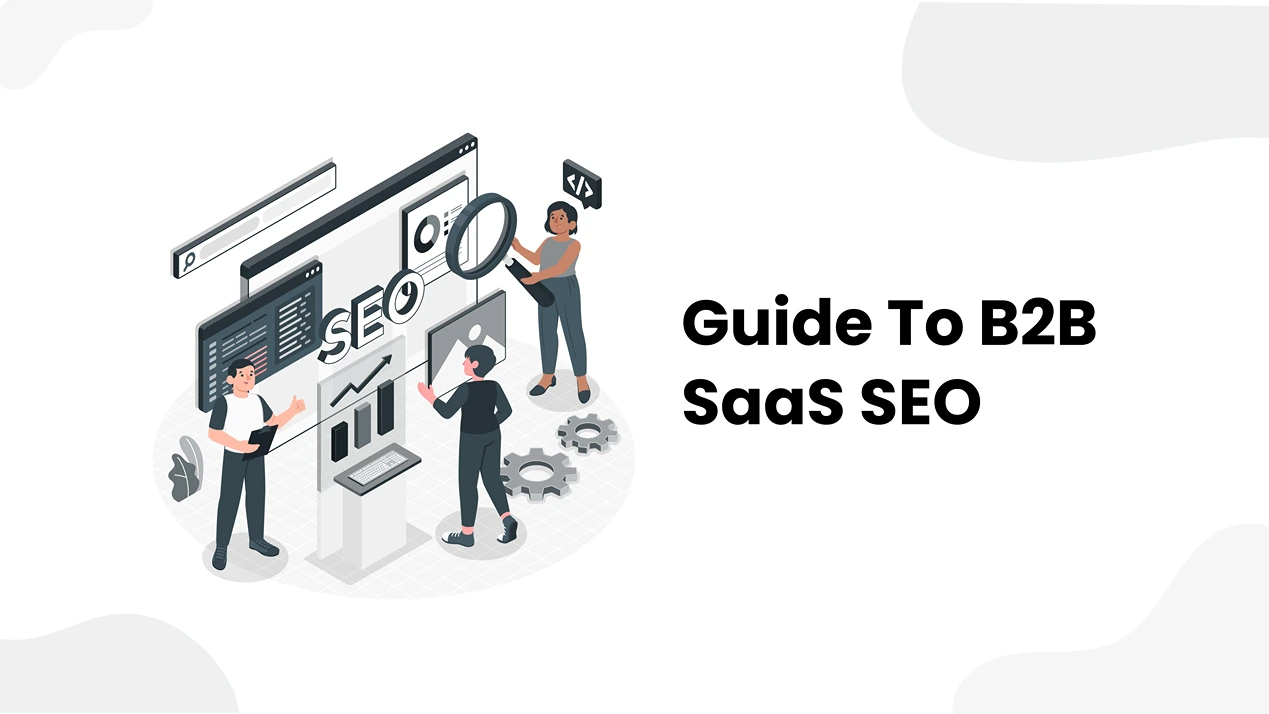B2B SaaS SEO is not just about climbing the search engine ranks; it’s about crafting a strategy that resonates with your specific audience. Think of it as a blend of smart SEO moves and a deep understanding of what your B2B customers are looking for.
In 2024, the SaaS market is expected to be valued at 232 billion U.S. dollars, up from an estimated 197 billion U.S. dollars in 2023.
Imagine this: Your SEO strategy does more than bring traffic to your site. It starts conversations, solves problems, and positions your SaaS product as the go-to solution in your niche. That’s the kind of strategy we’re discussing that turns clicks into meaningful engagement.
This guide will walk you through tailor-made B2B SEO strategies for your SaaS businesses.
Why Incorporate SEO for B2B SaaS Success?
SEO is significant in the SaaS sector, which has experienced considerable growth.
SaaS SEO goes beyond simply climbing search engine rankings in 2024. It’s about embracing the needs of your B2B audience and making your solution visible, accessible, and compelling.
Here is the difference between B2B SaaS SEO and regular SEO:
| B2B SaaS SEO | Regular SEO | |
|---|---|---|
| Target Audience | Businesses and professionals | General online users |
| Keyword Focus | Industry-specific, long-tail keywords | Broad range of keywords |
| Content Depth | In-depth, technical, industry-related | General, user-friendly content |
| Content-Type | Whitepapers, case studies, webinars, videos | Blog posts, articles, videos |
| Conversion Goals | Lead generation, nurturing, long-term value | Direct sales, immediate conversions |
| Link Building Approach | High-quality industry backlinks | Diverse backlinks, social, media presence |
| Content Promotion | LinkedIn, industry forums, email marketing | Social media, influencers, email campaigns |
| Customer Persona | Decision-makers, procurement teams | General online audience |
Understanding these strategies is essential for businesses to choose the right approach, whether reaching out to individual customers or navigating the complex world of B2B SaaS.
Now, we can go through the complete step-by-step SaaS SEO strategy that helps you in your business.
Complete Step-By-Step SaaS SEO Strategy
1. Identifying Your Ideal Customer Profile (ICP)
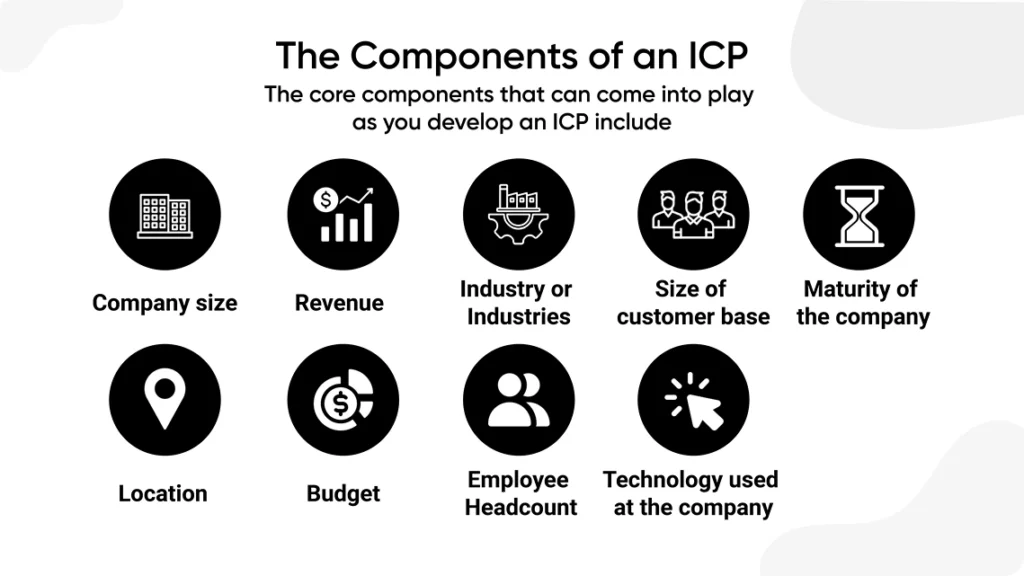
One of the first and most crucial steps in B2B SaaS SEO is identifying your Ideal Customer Profile (ICP). By understanding who your ICP is, you’re strategically aiming them at targets most likely to be interested in your SaaS product.
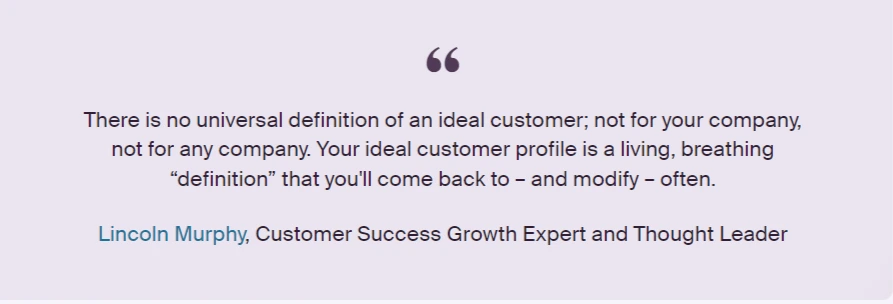
Understanding your ICP is like having a detailed map of your customer.
a. Define Demographic and Firmographic Attributes
Demographics categorize the population based on various factors that describe individual characteristics. Identify the basic demographic details:
- Age
- Gender
- Job title
Firmographics serve as a tool for segmenting and defining organizations, functioning similarly to demographics but for businesses. They are precious for B2B marketers.
Firmographics that are used to identify an ICP for a SaaS company include factors such as:
- Company size
- Generated Revenue
- Industry type
- Location
b. Understand Their Pain Points
Identify and prioritize the most significant hurdles that your ICP faces.
- Which challenges have the most substantial impact on their efficiency, profitability, or competitiveness?
- Are there immediate pain points that demand urgent solutions?
- How do these pain points align with their business goals and objectives?
c. Analyze Their Online Behavior
Use Google Analytics to understand how your ICP interacts online. Identify and prioritize the most significant hurdles that your ICP faces.
- Which challenges have the most substantial impact on their efficiency, profitability, or competitiveness?
- Are there immediate pain points that demand urgent solutions?
- How do these pain points align with their business goals and objectives?
- What are their search patterns?
- What kind of content do they engage with?
2. Keyword Research for B2B SaaS
It’s all about discovering the precise keywords and queries your customers are searching for in SERPs. This isn’t just a mundane task; it’s a strategic adventure that can significantly impact your online presence and customer acquisition.
a. Start With Seed Keywords
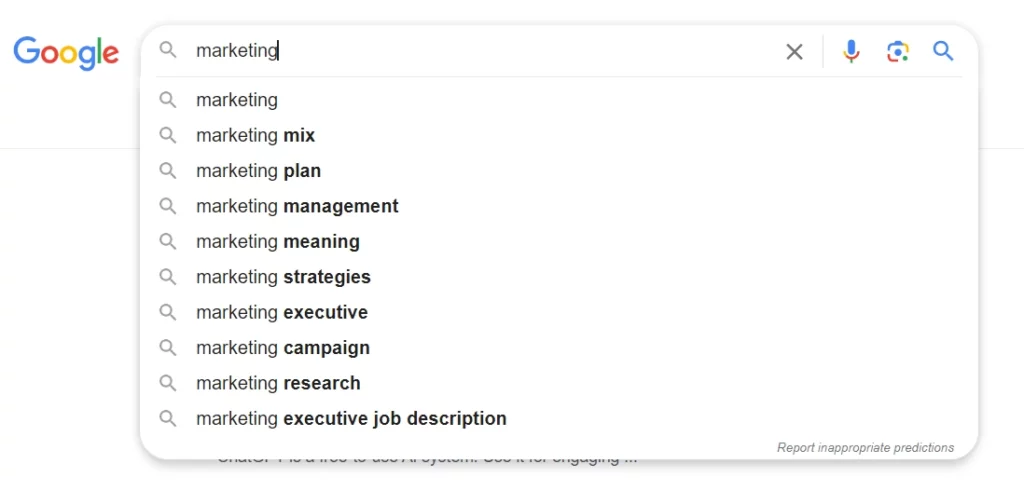
Seed keywords are the fundamental keywords or phrases that represent the main topic or focus of your content, website, or business. They are like the foundation of a building upon which your entire SEO strategy is constructed.
If your website focuses on healthy recipes, your seed keywords could be:
- “Healthy recipes,”
- “Clean eating,”
- “Nutritious meals”
These seed keywords encapsulate the core theme of your website. You can grow more specific and targeted keywords from these seeds, known as “long-tail keywords.” For instance, from the seed keyword “Healthy recipes,” you can branch out to:
- “Healthy breakfast recipes,”
- “Low-calorie dinner ideas,”
- “Vegetarian lunch options”
By optimizing your content around these seed and long-tail keywords, you’re telling search engines like Google what your website is about. When someone searches for related terms (e.g., “Healthy dinner recipes”), your website is more likely to appear in search results because it’s built with relevant seed keywords.
b. Expand with Google Keyword Planner
Use Google Keyword Planner to focus on search volume and competition and make a list. This tool provides insights directly from Google, making it highly reliable.
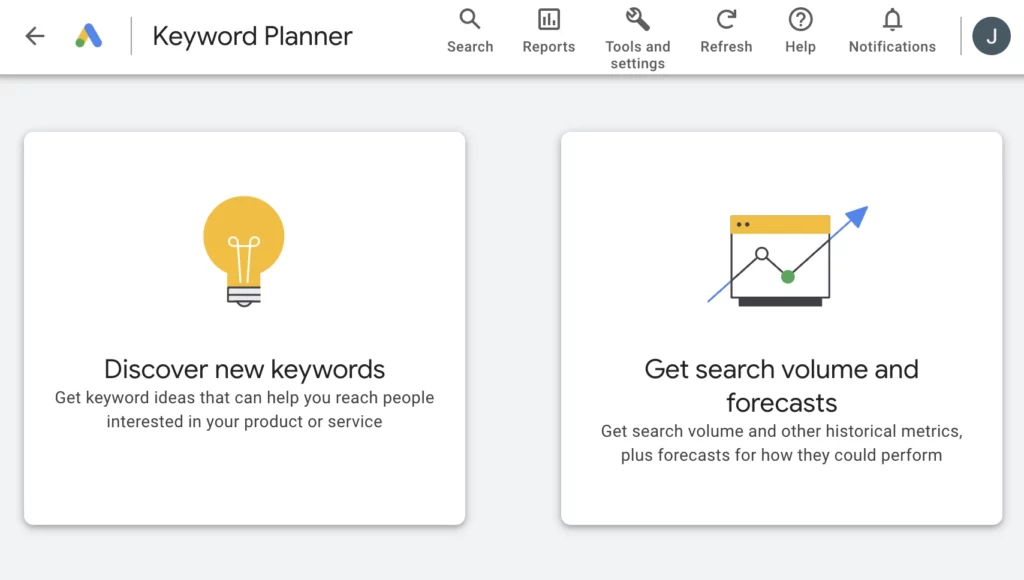
c. Voice Search Optimization
As B2B SEO evolves, adapting to emerging trends is paramount. Voice search has become a prominent feature in user behavior, emphasizing the need for strategic keyword incorporation.
For instance, consider adding location-based voice search terms like “[your product/service] near me” to enhance local visibility.
Examples:
- Original Keyword: “B2B SEO tools”
- Voice-Optimized: “B2B SEO tools near me”
- Original Keyword: “Marketing solutions for businesses”
- Voice-Optimized: “Marketing solutions for businesses nearby”
Moreover, focus on long-tail keywords and conversational phrases that mirror typical voice queries. This ensures that your content aligns with the natural language users employ in voice searches, boosting your chances of being featured in voice search results.
Example:
- Original Keyword: “Effective B2B marketing strategies”
- Voice-Optimized: “What are some effective B2B marketing strategies for my business?”
By incorporating these voice search optimization techniques into your keyword research strategy, you not only stay ahead of the curve but also position your B2B SEO content to effectively reach and engage with your target audience in the era of voice-activated search.
d. Spy on Competitors
Use tools like SuiteJar to analyze the keywords your competitors are ranking for. This can reveal valuable insights into their strategy.
You can use the competition analysis feature to spy on your competitor’s keywords.
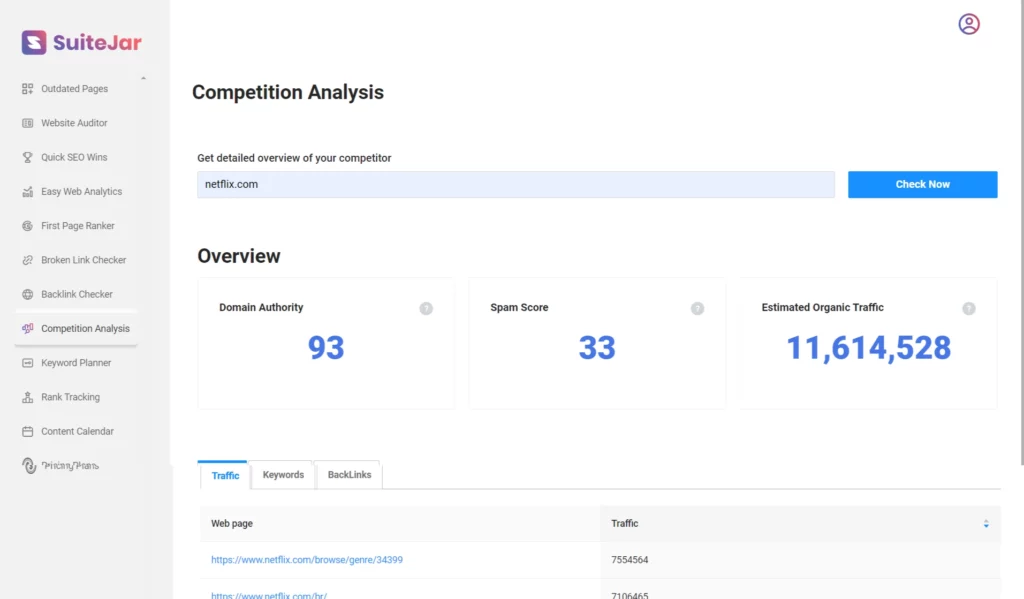
Here, you’ll find comprehensive details such as the keyword, search volume, keyword difficulty, competition level, traffic, CPC, organic ranking, overall ranking, and the URL.
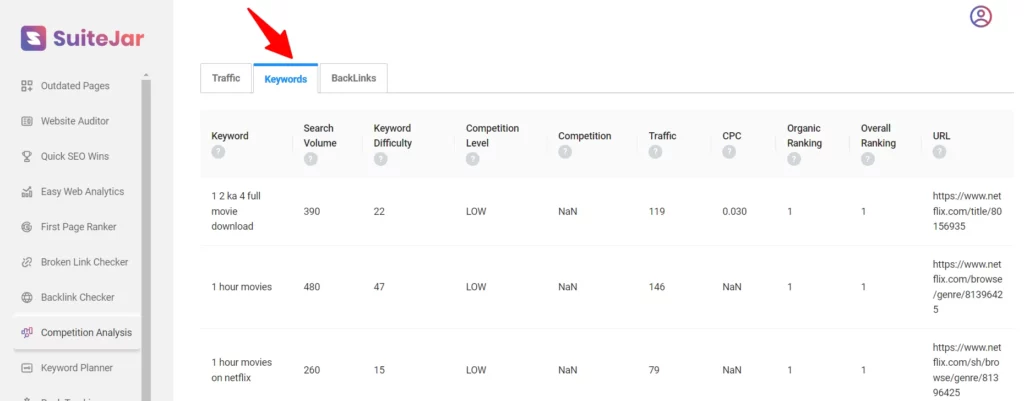
e. Find Question Keywords with Answer the Public tool
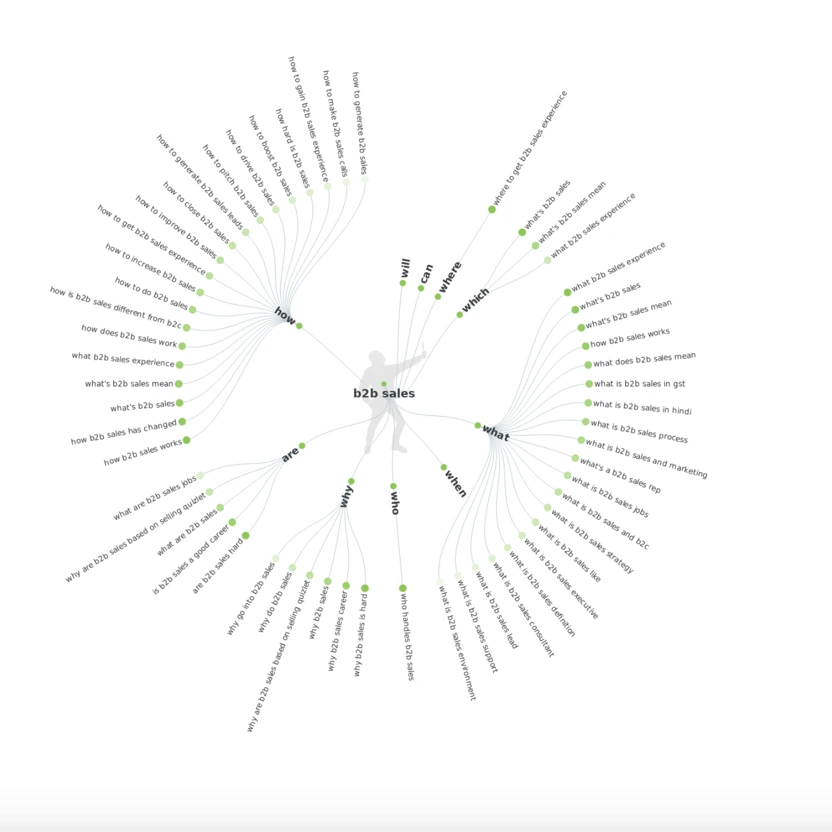
To find question keywords using Answer the Public, visit the website (answerthepublic.com) and enter your primary keyword, like content marketing.
Explore the categorized questions generated by Answer the Public, analyzing data for relevant and high-impact questions. Utilize filters to refine results by language, location, or question type.
f. Regularly Review and Adapt
Keyword trends can shift. Regularly update your keyword strategy to stay aligned with changes in search behavior and market dynamics. Use a good keyword research tool to review and check keywords regularly.
Follow these steps to craft a keyword strategy that boosts your B2B SaaS website’s SEO performance and aligns perfectly with your target audience’s search habits and preferences.
3. On-Page SEO Strategies for B2B SaaS
On-page SEO is crucial for B2B SaaS companies, serving as the foundation for your website’s visibility in search engines and user experience. It involves optimizing different elements of your site to make it more appealing to search engines and users.
Let’s explore the best practices and essential steps for effective on-page SEO in the SaaS domain.
a. Optimize Titles and Meta Descriptions
Start your page titles with key phrases that capture the essence of your content. This approach not only aids in search engine optimization but also immediately grabs the reader’s attention by highlighting the most relevant terms.
The meta description will look like this in search results:

When crafting a meta description, remember these:
- Reflect the page content accurately.
- Include relevant keywords naturally.
- Keep it under 155 characters for full visibility.
- Use clear and straightforward language for easy understanding.
- Highlight value to encourage clicks.
- Ensure each page has a unique description
- Optimize for mobile viewing
- Place crucial information at the start
A compelling meta title is crucial for search engine optimization (SEO) and attracting user attention.

Remember these points when writing a meta title:
- Align with page content.
- Prioritize keywords early.
- Keep it concise (55 characters).
- Clearly convey the main message.
- Include the brand if applicable.
- Craft a compelling title.
- Ensure uniqueness.
- Ensure readability on all devices.
b. Effective Use of Header Tags
Structure your website content with header tags (H1, H2, H3, etc.) to improve readability and SEO.
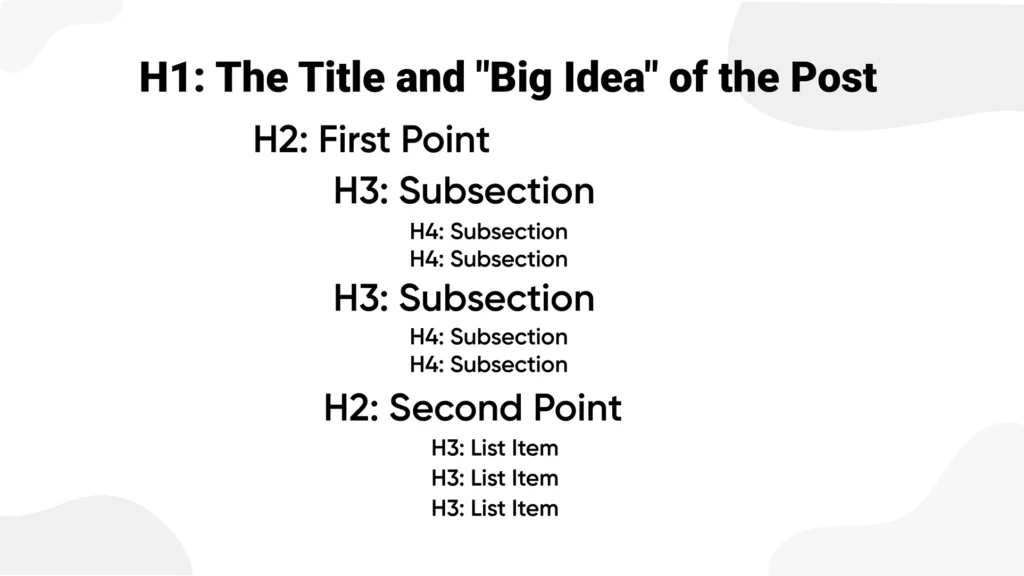
Include keywords in headers, particularly in the H1 tag, which should be unique to each page.
c. Image Optimization

Image optimization is about choosing the right names for your images and using alt tags, which are short descriptions. It’s also important to make sure images aren’t too large.
Smaller image sizes help your website load faster, giving visitors a better experience. Use clear names, add helpful descriptions, and keep your images light for quick loading.
d. Internal Linking
You have to add relevant internal linking to your content. This helps search engines understand the relationship between different pages on your website.
- Select the anchor text in your content that accurately describes and relates to the page you’re linking to.
- Ensure the page you’re linking to is contextually relevant and adds value to your content.
- Insert the internal link where it fits naturally in the content.
- Limit the number of links to avoid appearing spammy and maintain your content’s quality.
By integrating these on-page SEO strategies and considerations, your B2B SaaS website will not only be optimized for search engines. Still, it will also provide a superior user experience, helping to attract and retain your target audience effectively.
4. Technical SEO for B2B SaaS
In B2B SaaS, technical SEO ensures your website is visible and performs optimally in search engines. It involves a range of backend optimizations that enhance your site’s ability to be crawled and indexed effectively.
Let’s explore the comprehensive checklist for conducting a technical SEO audit and optimization.
a. Site Speed
Fast-loading pages are essential for user experience and search engine ranking. Data shows that the bounce rate increases when a website takes page load time from one to five seconds. So, site speed is vital for user experience and ranking factors.
Here are six essential tips to improve your website’s average page load time:
- Optimize Images
- Minify CSS, Javascript, and HTML
- Leverage browser caching
- Reduce redirects
- Use a Content Delivery network
b. Mobile-Friendliness
With the increasing use of mobile phones, having a mobile-responsive site is crucial. Always make sure to ensure your website is mobile-friendly because it’s a key factor in Google rankings.
You can test it by using The Google Mobile-Friendly Test tool. Enter the URL you need to check and click the ‘test URL.’

Then, you will see the status of your given page.
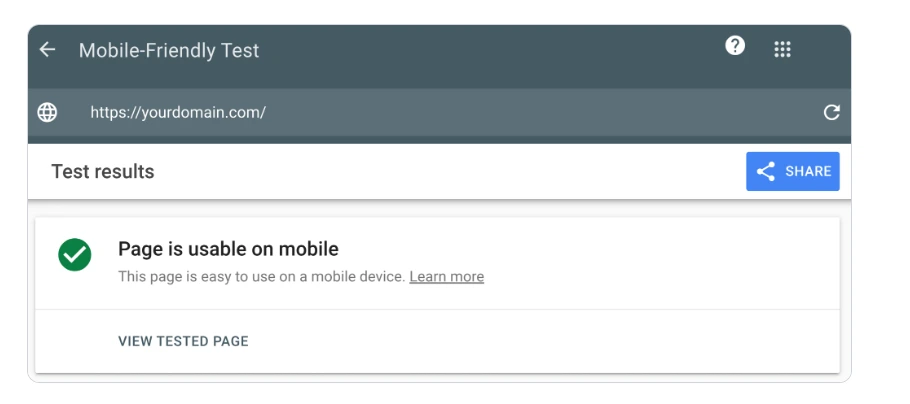
c. Implement SSL
SSL (Secure Sockets Layer) protects the web service and a browser and makes your site safe. An SSL certificate is denoted by a domain that begins with “https://” and a lock symbol in the URL bar.

Non-HTTPS sites may trigger browser warnings, impacting user experience and engagement. Overall, SSL is a standard practice for websites seeking to optimize security and search engine visibility.
d. Structured Data & Schema Markup
Structured data is a way to give search engines info about a page. It uses a special kind of HTML called schema.
Implementing schema markup is a vital aspect of technical SEO as it aids search engines in comprehending your content more effectively. Schema markup provides a standardized way to communicate specific details about your webpage, such as product information, reviews, events, etc.
For example, this is what schema markup can look like for reviews:
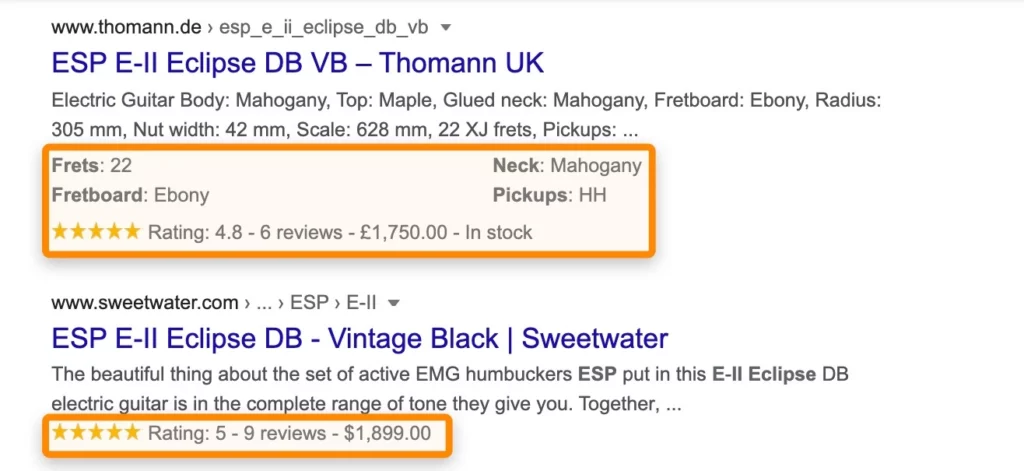
By structuring data using schema markup, you enhance the context and relevance of your content for search engines, potentially leading to improved visibility in search results.
e. User-Friendly URL Structure
Effective URL structure is crucial for both user experience and SEO. It’s essential to create short, clear URLs and include relevant keywords. This makes them easy to understand and search engine friendly.
Avoiding lengthy and complicated URLs with unnecessary parameters is critical. Always remember to use hyphens in your URL to separate words and keep it short.
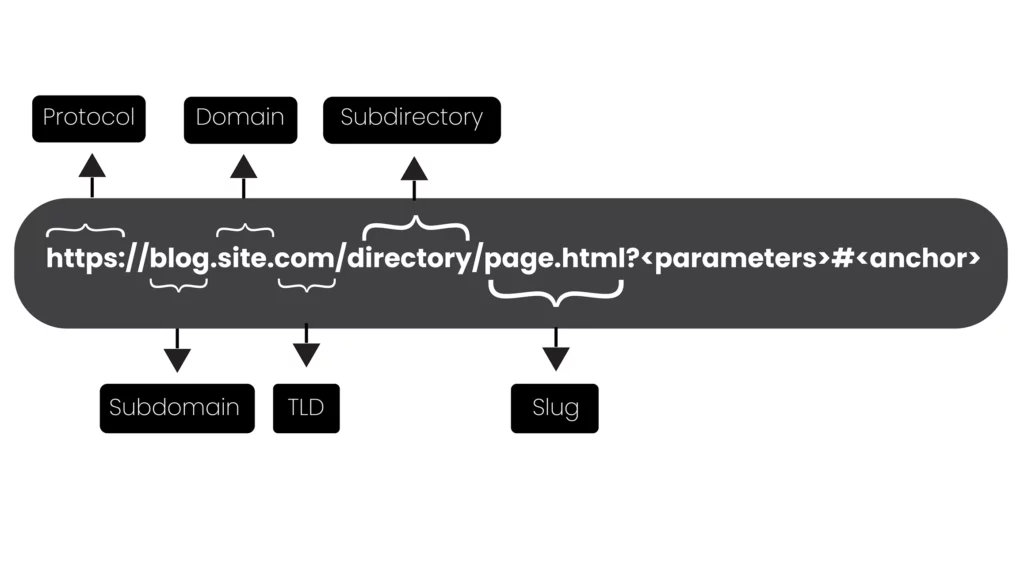
The SEO-friendly URL structure will look like this:

f. Addressing Crawlability Issues and Indexing
Addressing crawl errors is a crucial step in the technical SEO checklist. Regularly check your website’s crawl reports to identify any issues search engine bots encounter while navigating your site.
Common crawl errors include broken links, inaccessible pages, or server-related problems.
To pinpoint crawl errors, utilize Google Search Console and go to the “Pages” section. Once there, you’ll encounter categories like ‘Indexed’ and ‘Not Indexed’.
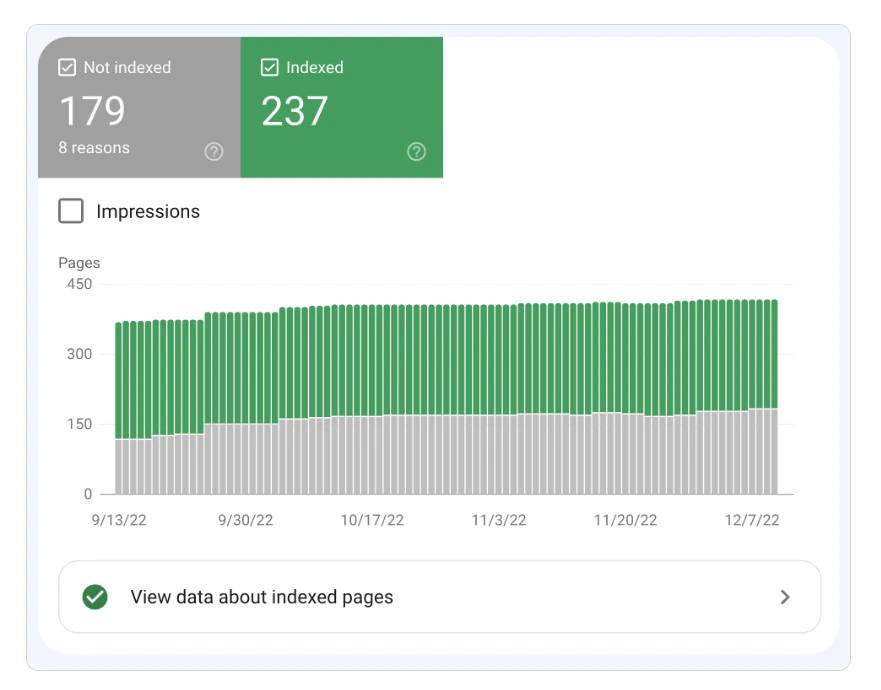
Crawl errors typically fall under the ‘Not Indexed’ category. Identify and resolve these errors to ensure optimal website crawling and indexing performance.”
g. Check for Broken Links
Regularly scan for and fix broken links that negatively impact user experience and SEO. You can use a tool designed to simplify finding these broken links.
You can get all the details, like the total number of broken links and links data.
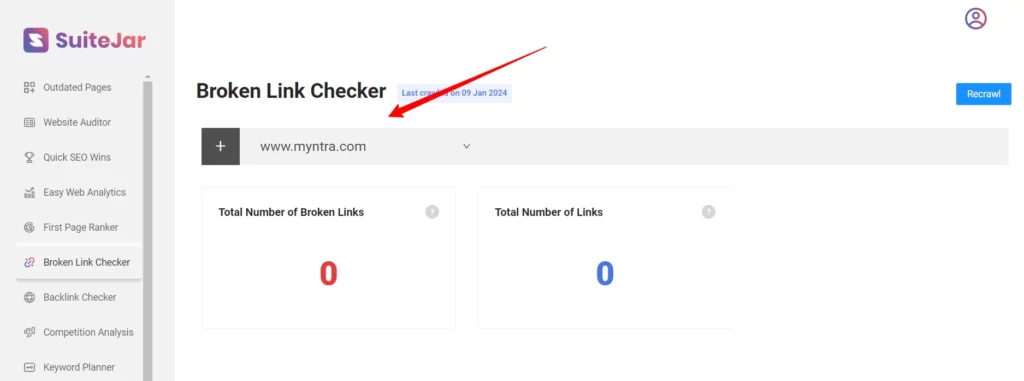
h. Optimize Your XML Sitemap
An XML sitemap informs search engines about your site’s structure and what to index in SERP. Keep your XML sitemap updated and error-free to help search engines crawl your website.
Remember some important points when optimizing the XML sitemap:
- Any new content added to your site, like new blog posts, products, service pages, etc.
- No more than 50,000 URLs per XML sitemap to maximize crawl budget.
Here are some points that you need to exclude from the XML sitemaps:
- URLs with parameters
- URLs that are 301 redirecting or contain canonical or no index tags
- URLs with 4xx or 5xx status codes
- Duplicate content
Check for any XML sitemap index errors in Google Search Console’s index coverage report.
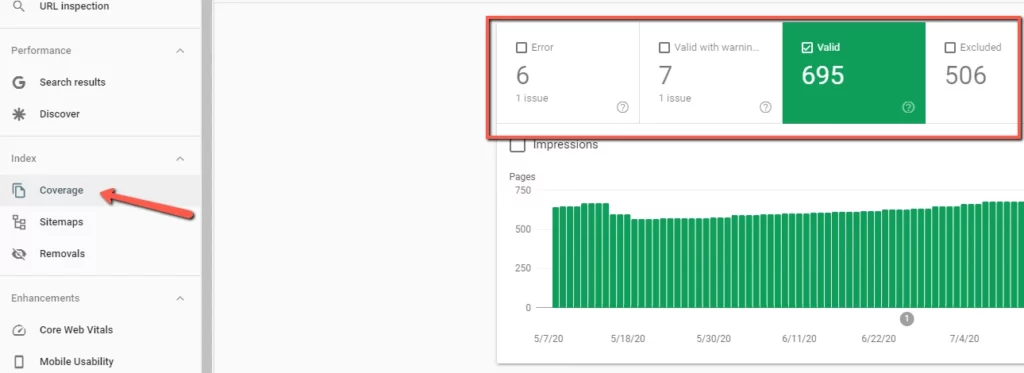
j. Optimized robots.txt file
The ‘robots.txt‘ file is pivotal for websites, guiding search engine crawlers on which pages to crawl and index. This tiny but impactful file helps enhance SEO by controlling access to specific content, prioritizing essential information, and optimizing server resources.
And you can see your robots.txt file by typing your homepage URL and adding /robots.txt.
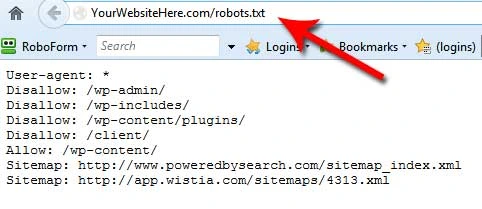
By following this checklist, you can ensure that the technical foundation of your B2B SaaS website is solid, setting the stage for successful SEO efforts and a better user experience.
5. Link Building Strategies & Off-Page SEO for B2B SaaS
a. Analyze the backlink profiles of your competitors.
When searching for backlink ideas, you can search in your competitor’s link sources. You can get help with a link analysis tool like SuiteJar.
Enter your competitor’s website URL to get backlink ideas. Discover each backlink’s title, source, destination, characteristics, and status.

b. Local SEO
Local SEO strategy in link building and off-page SEO is essential for businesses looking to increase their visibility in specific geographic locations. This approach helps businesses appear in local search results, particularly important for companies serving customers in a defined area.
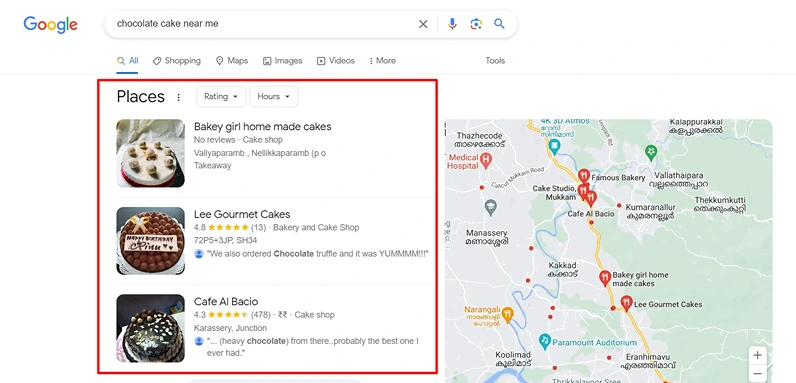
You can sign up for GMB, a free business listing by Google with a simple process, and always remember these things:
- Ensure your business is listed and verified on Google My Business.
- Keep your business name, address, phone number (NAP), and operation hours up-to-date.
- Add quality photos and videos of your business.
- Encourage your customers to leave reviews on your GMB.
c. Share Content on Social Media
Share content on social media to increase reach and engagement. This helps you get high traffic by people discovering your content more, and they will link to your content.
Remember these points:
- First, you must evaluate your audience, service, products, and all to decide which social media platforms to focus on. If you have a crafts-making business, you can get much help from Instagram and Pinterest by uploading your work.
- Create tailored content for these social media platforms. According to the social media platform, you can make carousels, single posters, video content, etc.
- And last, always remember to engage with your audience. You have to respond to their comments and questions and always be available for them. It helps you to encourage interactions.
- Make your content look good on social media platforms because the audience is always attracted to catchy and informative content.
d. Link-Building Outreach
Link-building outreach is a fundamental aspect of a successful link-building strategy. It involves contacting other websites and content creators to get them to link back to your site. This process can enhance your site’s authority and improve your search engine rankings.
Let’s elaborate on the various opportunities within link-building outreach:
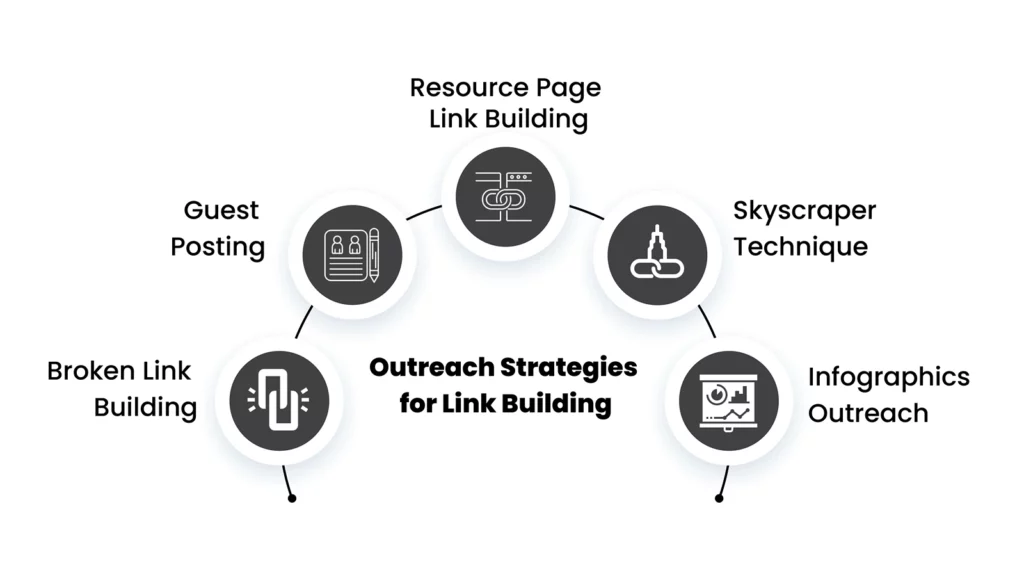
- Broken Link Building: Use SEO tools to find broken links on websites relevant to your niche. Reach out to the site owner or web admin, inform them about the broken link, and suggest your content as a suitable replacement.
- Guest Posting: Identify blogs or websites relevant to your industry and accept guest posts. Pitch them with topic ideas that would be of interest to their audience. In your guest post, include a link back to your site.
- Resource Page Link Building: Find websites with resource pages relevant to your content. Reach out and suggest your content would be a valuable addition to their resource page.
- Skyscraper Technique: Identify content with many backlinks and create something better. Then, reach out to those who linked to the original content, suggesting they link to your improved version instead.
- Infographics Outreach: Create an informative and visually appealing infographic. Find websites that have written about similar topics and suggest they include your infographic in their content with a link back to your site.
Each of these strategies contributes to a robust link-building campaign, helping to increase your website’s authority and improve its search engine ranking. Success in link building often comes down to consistency, quality of content, and effective communication.
Also Read: Complete Guide to Backlinks Outreach
e. Video Marketing
Video marketing strategy is an increasingly important component of off-page SEO, as it can significantly boost your brand’s online presence, engagement, and link-building efforts.
Here’s how to effectively integrate video marketing strategy:
- Develop a video content plan that needs to define your audience’s brand awareness, lead generation, and more. You create product demos, how-to guides, customer testimonials, and explainer videos.
- Use targeted keywords in your video’s title and descriptions for better search engine optimization.
- Choose the right platform to engage with your targeted audience. Video marketing can significantly enhance your online presence, improve rankings, and increase website traffic.
Creating engaging content for your targeted audience is crucial to encourage sharing and linking. By implementing these link-building and off-page SEO strategies, your B2B SaaS business can improve its domain authority, rankings, and overall online presence.
Suggested Read: Top Marketing Agencies for B2B SaaS Explainer Videos
6. Content Marketing for B2B SaaS
Content marketing in the B2B SaaS sector is pivotal for driving growth, enhancing your online presence, and establishing a connection with your target audience. It involves creating relevant content to attract, engage, and convert your audience.
Let’s delve deeper into the role of content marketing in SaaS SEO that resonates with a B2B audience.
Comprehensive Checklist for B2B SaaS Content Marketing
B2B content marketing involves distributing content that helps business-to-business companies increase brand awareness, website traffic, lead generation, and sales. That includes blogging, email newsletters, podcasting, and more.
A perfect content marketing strategy brings your traffic and leads and helps you get the best sales in your industry. When you continuously publish content, you will be noticeable, making the audience more likely to buy from you.
a. Publish Industry Studies
Sharing original industry studies positions your business as a thought leader and a credible information source. It helps gain backlinks and shares, enhancing brand authority and SEO.
Method: Conduct surveys, research, or analyze internal data to create insightful reports relevant to your industry.
Here’s why it’s essential:
- Becoming a Trusted Source
Industry studies show you’re a leader, not a follower. It tells your audience that you’re serious about what you do.
- Getting More Website Links
SEO highly regards quality backlinks, and studies have a knack for attracting them. When other websites link to your valuable research, it boosts your SEO and signifies its worth to the online community.
- Social Media Buzz
When you share valuable data, it gets amplified across social media and catches the attention of search engines. This widens your reach and boosts your online presence.
- Building Brand Authority
Establishing yourself as an authority in your niche draws in new audiences and fosters trust among your existing followers. Begin by conducting surveys, researching current trends, or analyzing your data.
For example: if you’re in cybersecurity SaaS, you could survey businesses about new threats. Then, turn your findings into a report.
- Boosting SEO
Google values authoritative content. Publishing studies that generate links and shares can enhance your SEO and improve your website’s search rankings.
b. Send Weekly Newsletters
Consistent newsletters keep your brand in regular contact with your audience, nurturing leads and customers. It drives traffic to your website and keeps your audience engaged with your brand.
Method: Share updates, insights, latest blog posts, industry news, and exclusive content with your subscribers.
Please note these important steps before creating email newsletters:

c. Test Out LinkedIn Content
LinkedIn is beneficial for business-to-business networking and sharing content. Linkedln content increases visibility among professionals and can lead to valuable connections and leads.
Method: Share articles and company updates and engage in industry-specific conversations.
This is the structure for LinkedIn post sharing created by Backlinko:
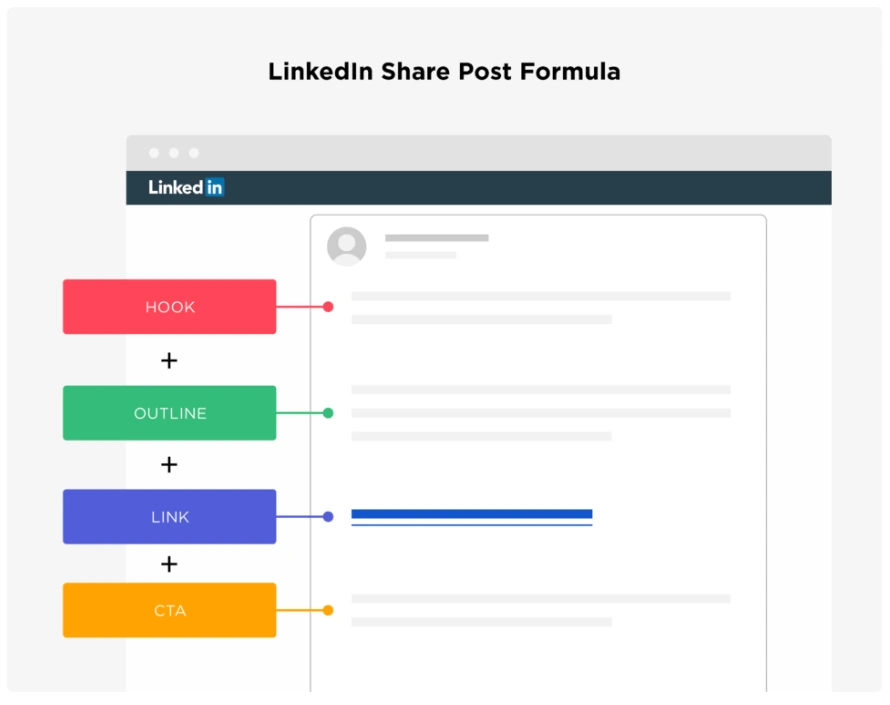
d. Create Complete Guides
Comprehensive guides are valuable resources that attract and educate your target audience. This helps position your company as an expert and a go-to resource, improving SEO and user engagement.
Method: Develop in-depth content on specific topics that covers all relevant aspects and questions.
Like this:
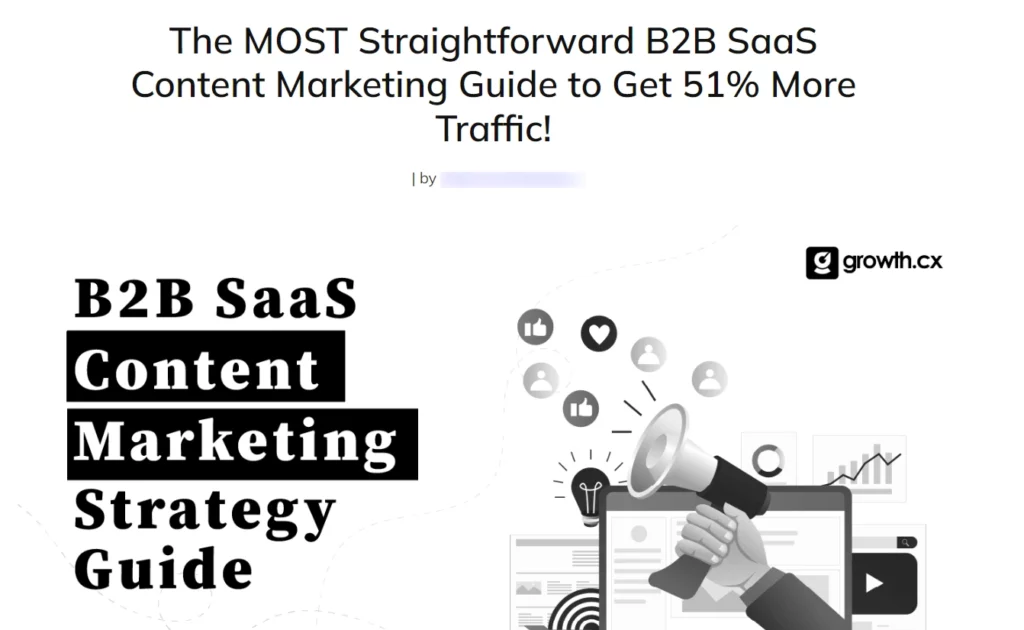
e. Create B2B Video Content
Video content can explain complex products or services in an engaging and digestible format. It enhances user engagement and can be used across various platforms (website, social media, YouTube).
Method: Produce how-to videos, brand videos, explainer videos, product demos, expert interviews, or behind-the-scenes looks at your company.
Look at this, this is a brand video marketing example by the social media management tool Hootsuite:
(https://youtu.be/enLzzpfirG0?si=lMrGJJPXXZStv4bV)
f. Promote Your Content with Email
Email marketing is a direct way to get your content in front of your audience. Drives targeted traffic to your content and can directly contribute to lead nurturing and conversion.
Method: Use segmented email lists to send targeted content promotions to different audience groups.
This email I got from Neil Patel hooked me to take the following action:
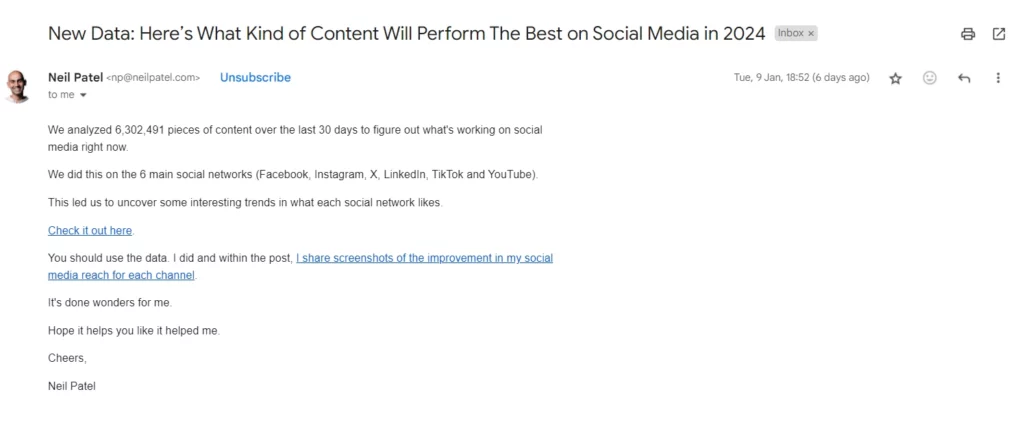
g. Find Fresh Topic Ideas
Keeping content updated and relevant is key to maintaining audience interest. Ensures your content stays relevant and exciting, attracting and retaining a loyal audience.
Method: Use tools like Google Trends, listen to customer feedback, or monitor forums to find new topics.
By integrating these strategies into your B2B SaaS content marketing plan, you can develop a robust approach that enhances your SEO efforts and establishes a strong connection with your target audience.
Also Read: Content Marketing Services: Your Key to Success
7. Identifying Low-Hanging Fruit in B2B SaaS SEO
In B2B SaaS SEO, identifying and capitalizing on low-hanging fruit – those SEO opportunities that are relatively easy to exploit and can yield quick results – is crucial. This approach can significantly enhance your SEO strategy’s effectiveness and efficiency.
Low-hanging fruit in SEO refers to strategies or changes that are relatively easy to implement but can yield significant improvements in search rankings and website traffic.
In the context of B2B SaaS SEO, these can include:
- Optimizing Long-Tail Keywords
- Enhancing On-Page SEO
- Content Updates
- Internal Linking
- Leveraging Existing Relationships
- User Experience Optimization
These strategies offer a practical starting point for B2B SaaS companies to enhance their SEO with minimal effort for quick and tangible results.
Suggested Read: Understanding Low Hanging Fruits in B2B SaaS
Conclusion
In summary, B2B SaaS SEO is vast and constantly changing. Don’t miss out on any opportunities—it’s not just about boosting traffic and sales; these basic steps set the stage for more advanced strategies.
You can also hire an experienced growth-led SEO agency that helps you take an innovative approach to SEO and positively impact your digital journey.

